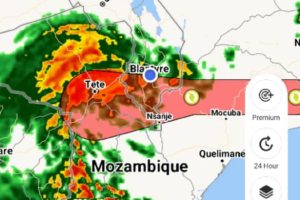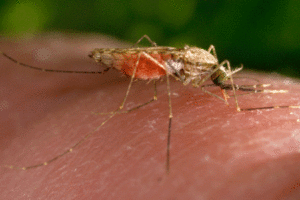Finding a post-apocalyptic landscape during travel used to be a rare event. Chernobyl. Ghost towns in the American West. They were few. Not anymore. In the span of a year I have seen two, one in North America the other in Africa.
In October 2020, a friend living in Malawi emailed and asked if I could retrieve a few items for her from a hotel in downtown Washington DC. She had been scheduled to attend a (now cancelled) medical conference at DC’s huge convention center. In anticipation of presenting at the conference she had several items shipped to a hotel. She asked if I would reclaim them.
I had an upcoming appointment near Foggy Bottom, so decided to combined this journey with retrieving her items. My appointment was two blocks from the White House. Afterwards, I decided to walk to my friend’s hotel. It was a beautiful day and I wanted to see what downtown DC looked like mid-pandemic. My destination was Gallery Place, about 2 km east. I would traverse the heart of Washington DC, a vibrant city with beautiful monuments, usually crowded with stores full of shoppers.
The nearest I could get to the White House was one block away. It appeared as it would in an alien invasion movie. The Black Lives Matter protests were ongoing. The square directly adjacent had recently been cleared for the “Let’s Hold an Upside Down Bible up in front of a Church” photo op. Between the multiple rings of fencing and the concrete barricades, I could barely see a corner of the White House.
Continuing east I traversed an empty downtown DC. The few stores that had not been abandoned were boarded up with plywood. The normally humming retail stretch between the National Portrait Gallery (closed) and Chinatown (completely boarded up) were empty. During my half hour mid-day, mid-week walk I saw four people, all homeless. Entering my destination, the empty hotel, I retrieved my friend’s items. To get home I got onto an empty Metro.
Almost exactly one year later, I am transiting Johannesburg en route to Malawi. Today, walking through the large, empty airport, I flashed back to that afternoon in an apocalyptic Washington, DC.
Almost exactly one year later, I am transiting Johannesburg en route to Malawi. Today, walking through the large, empty airport, I flashed back to that afternoon in an apocalyptic Washington, DC. Those who fly frequently know that in the last two years, South African aviation was dealt a double whammy. The country’s flag carrier, South African Airways, had long been in financial trouble. When the pandemic hit, the airline ceased operations. Only last month did the company reorganize. Previously, one could fly non-stop on South African Airways across Africa and to Washington DC, New York, Sao Paolo, and Hong Kong. Now, the recreated airline serves 6 destinations, all in Africa. Without competition, other airlines flying in southern Africa have dramatically raised prices. The increased cost and lack of available air routes currently makes Johannesburg an unattractive hub for travel.
Today, I saw the result in OR Tambo International airport. There was no wait at security or immigration. The airport shops, usually full, were empty. Inside the monstrous frequent flier lounge, I was the lone customer. As he made my café latte, the bartender thanked me for flying, telling me he was happy to have something to do. Thinking perhaps I was visiting during a lull, I asked him when were the lounge’s busy hours. “Never. It is always like this.”
I will return to Washington DC in 3 weeks and am scheduled to take the same cross-town walk as I did a year ago. It feels like the USA is, in general, in an upswing. I look forward to retracing my steps and seeing if this is true in downtown Washington. I often transit Johannesburg so in the coming months and years will witness the future of the airport, albeit intermittently. I hope this is all a trough in the sine wave of business and life, a deep world-wide trough preceding an upswing. Will it ever be normal again? I suppose that’s how one defines “normal.”






